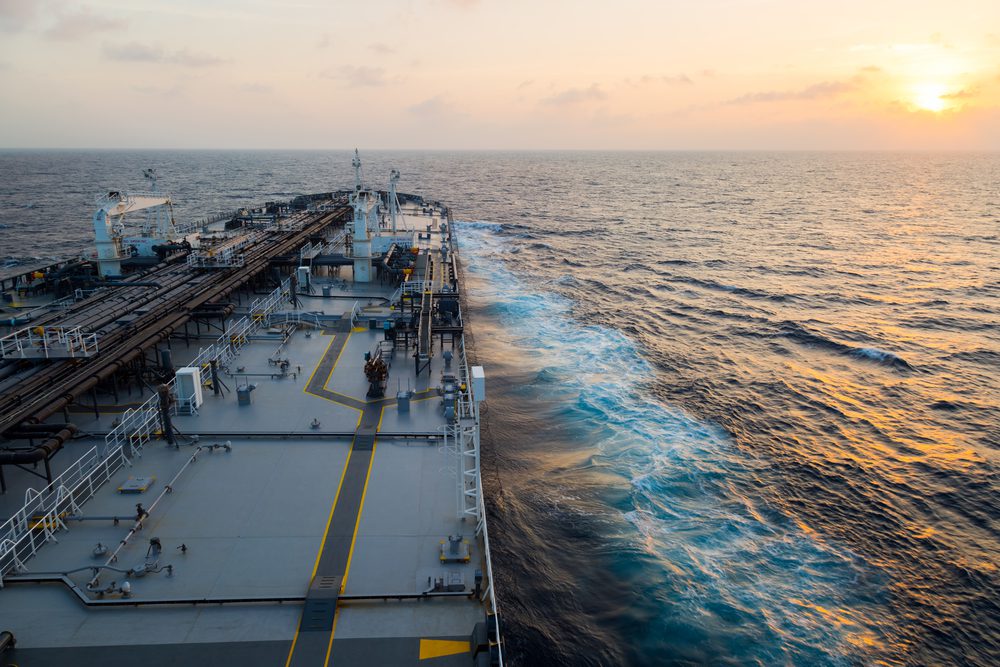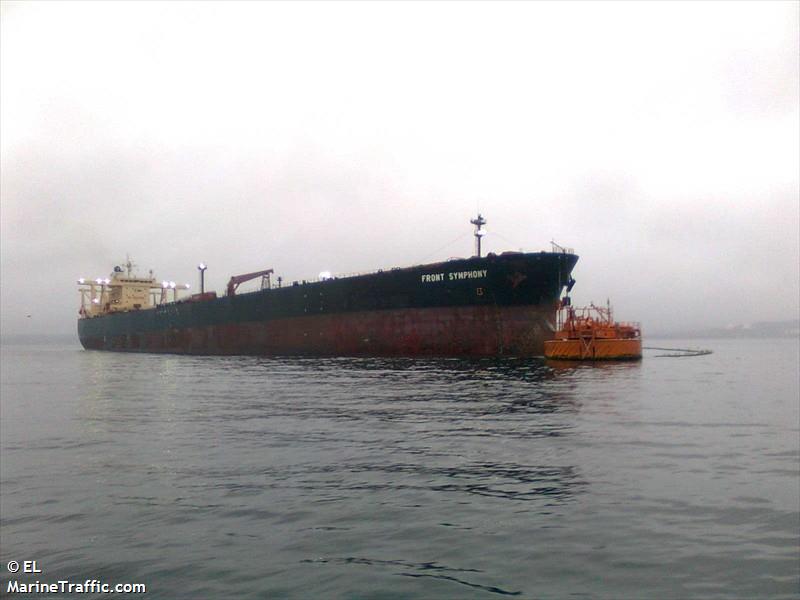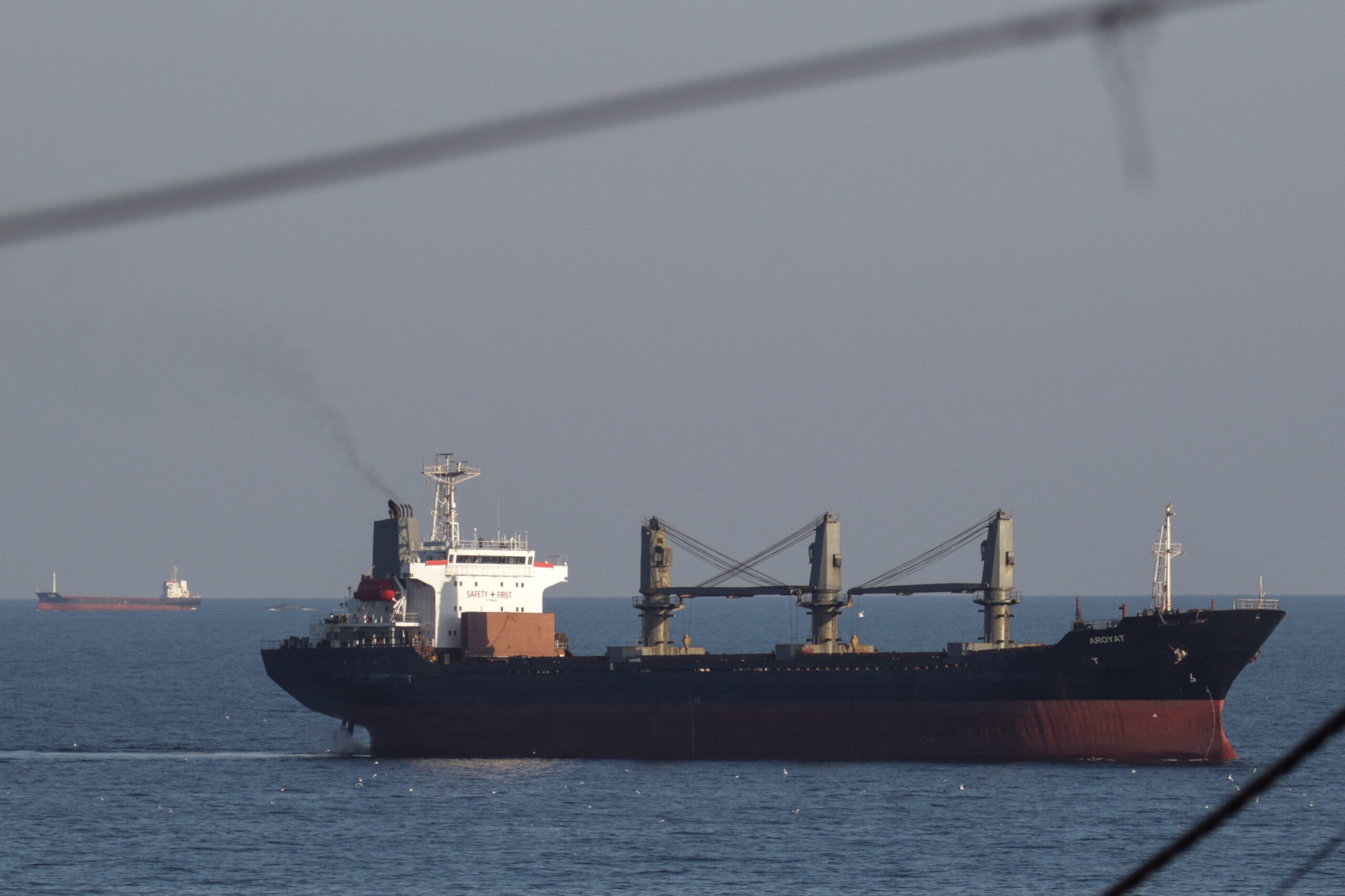The stock market’s indices are all down- but the tanker stocks are up. What’s with that? Conventional wisdom has it that “disruption”, however you define it, is good for the share prices of listed tanker companies.
In the day following the President’s Day holiday in the States, the S&P 500 and the Nasdaq Composite dropped 1.01% and 1.23%, respectively, from the closing just prior to the long weekend. The Dow Jones Industrial Average came off by 1.42%. This entire trio of indices (plus other broad composites of shares) had already been falling in the previous weeks as the saber rattling from the Ukraine region had been growing louder. For example, the Nasdaq, which started 2022 just shy of the 16,000 level, had fallen to 13,381 at the close on Feb. 22, a drop of roughly 15%.
Conversely, the stocks of listed tanker companies, were benefiting. Consider International Seaways, trading on the NYSE, with symbol “INSW”, a highly regarded international tanker name struggling though a very weak market for deepsea oil transportation. After beginning the year at $15.24/share, and dipping below $14/share in late January, it has rallied up to nearly $17/share at the close on Feb. 22.
Another tanker behemoth (if we can use that word in a fragmented business), Euronav- “EURN”, which started the year at around $9/share- had been pushed up (fighting the stock market currents, as it were) to nearly $11/share. Savvy traders who might have bought shares in Frontline (“FRO”), another big tanker stock, in late January at around $6.50/share, would have seen them rise to nearly $8.50/share in New York trading after President’s Day.
For the wonks reading this- the threats of war (which is where we are at the time of writing) bring about possible changes in available vessel supply and cargo demand that are favorable to shipowners. To put it bluntly, when a fear of reduced oil availability (let’s say due to a “shutdown” in a particular region) happens, frenzied buying of oil sets in, and the tanker markets will go crazy (how else to say it?) along with the oil markets. To be more academic about it, even as the hysteria eases, “trade pattern shifts” ensue- when overlaid on the tanker market, the shifts bring about some time period of re-arranging the matrix of cargo origins/ destinations. That means- increased capacity utilization, in the form of more ships needed to move the same end number of barrels. The bottom line is that shipowners are able to secure higher freights.
With London Energy Week, presentations and webinars are abounding. The tanker markets were addressed specifically as part of a Baltic Exchange webinar, with Fearnleys researcher Dag Kilen reviewing the market dynamics. He said “It’s all about production”, meaning that reduced oil supplies, coming out of OPEC + and others, have been responsible for the tanker market’s malaise during the past year. This weakness, in turn, has led to the disappointing prices of tanker shares.
The tanker markets are tied closely to the markets in the underlying commodities- notably crude oil.
An important observation about the oil markets in Mr. Kilen’s remarks has significant relevance for the tanker market- where memories of the 2Q 2020 boom (predicated on an oil storage buildup) have not entirely faded. The Fearnleys analyst made the point that not all tanker rallies correspond with an oil market “contango” (prices weak nearby, and strong going forward), which, two years ago, led to a tanker chartering boom. He was quick to differentiate the varied types of oil markets leading to tanker “spikes”.
In early 2020, and similarly after the oil price plunge of late 2014-we saw sharply upward oil price curves- which led to a run on tankers being chartered for oil storage. This could be contrasted with oil markets built on longer-run solid fundamentals that can also lead to an upward sloping price curve (connoting positive economic expectations).
At present, the oil markets are “backwardated” (meaning that prices are strong nearby and softer out in the future), a structure that’s not always a shipowner’s friend if the curve is based purely on traders’ views of the economy. On the tanker side, there may be something else going on- with disruption potentially lurking just around the breakwater.
The situation in the Ukraine, and whatever else it might ignite, did not come up explicitly in the Baltic’s line-up of presentations, but what we might see now is a very different kind of a rally in the tanker trades. Mr. Kilen, talked about another oil market, the extremely strong environment of 2008 (at that time oil prices almost touched $150/barrel)- when “…there were fears that we’d be running out of oil…and people just started to buy in panic…and tanker rates at that time started to go completely ballistic.”
Getting back to the interaction with the oil market, he said, “There was no contango driving it. It was just panic…it was all about securing a barrel of oil…and securing a ship that 100% guaranteed could deliver that oil.”
We are not there yet, but with all eyes on the Ukraine, tanker chartering desks may need to bring out their 2008 playbooks. And buyers of listed tanker stocks might enjoy the wild ride.

 Join The Club
Join The Club











